The Image as Part of the Culture and Identity of a Destination. Destination Branding and Destination Image- Juniper Publishers
Archaeology & Anthropology- Juniper Publishers
Abstract
The image of a destination goes beyond what it has,
tangible and intangible resources, reflects its identity. Forming this
image is a complex process, since it depends on several factors. The
tourists combine in their minds a series of variables (cognitive,
affective and conative) that give rise to the image of a destination.
That is why it varies from one tourist to another. The previous
perceptions, the own visit to the destination and the information
received from family and friends are forming the image of the
destination. But this image will positively or negatively influence the
re-visit to the destination and the information transmitted to other
tourists. Therefore, this is a growing field of study, in which we try
to have more information about this complex process.
Keywords: Image; Destination branding; Destination image; Destination; TourismIntroduction
Nowadays, destinations seek to be known globally,
being the key projected image in this process. The image of the
destination reflects not only the resources it possesses, but the very
identity of the destination. Cognitive and affective evaluations form
the global image of a place [1]. It is therefore necessary to understand
concepts such as Tourism Destination Image (TDI), since the image is an
essential component in the identity of the destination [2]. There are
several definitions of this concept, including some of them:
a.
The sum of beliefs, ideas and impressions that a person has of a destiny [3].
b.
A mental picture formed by a set of attributes that define the destination in its various dimensions [4].
c.
A set of impressions about a place where tourists do not reside [5].
These three definitions cover a very long-time
period, from the end of the 70s to the current decade. But all of them
are based on the same idea, the mental representation that the tourist
makes of a destination, whether it is the result of his impressions,
experiences, ideas, beliefs or the attributes of destiny. The most
recent theories group a series of factors whose union arises that mental
representation (Figure 1).

In addition, we can affirm that the concept of TDI is
multidimensional but there is no consensus regarding its
dimensions. One of the proposals is the one that adds these
three dimensions: 1) image or tourist landscape of the tourist
destination; 2) projected image of the tourist destination
or marketing campaigns; 3) perceived image of the tourist
destination or the effects of marketing and the experience in the
destination on the tourist. From all this we can conclude that the
concept of destination image is not totally defined, since there is
no consensus in the definition of the destination’s image, as well
as its dimensions, the evaluation and measurement methods, the
training process and of the process “before, during and after”
the trip. Other authors claim that there is a lack of a main and
definitive concept about the image and that the great diversity of
existing concepts generates “confusion” within the literature on
this subject. There are as many definitions as authors interested in
defining it. What is evident is the link between image and tourist
destination, or in other words, the importance of the image when
choosing a tourist destination. Therefore, its study has begun to
receive more attention. The image is linked to satisfaction and
the intention to revisit the destination, which is why it has been
studied by several researchers who have created a theoretical
base and conceptual models to characterize it [6]. The image
assumes an important role to consider developing marketing
strategies.
Destination Branding and Destination image
The tourist destinations, to become more competitive, are
betting on the concept of destination brand building. In this
way, the importance of addressing issues such as destination
branding, destination image and brand image arises, since the
image of the destination arises as an integral component of the
brand and the competitiveness of the tourism industry itself that
requires a marketing plan. Thus, branding is fundamental as part
of the impact on the positioning of the destination [7]. Destination
branding is a concept used in marketing to refer to the intangible
value or reputation of a destination through multiple dimensions of
it, such as its culture, its spots, companies, organizations, tourism,
etc. [8]. The original idea is of Simon Anholt, who introduced the
country brand in the first instance, arising subsequent derivations
as the city brand or in this case, the destination brand. Just as
with the marketing of products and services, the destination
brand finds its place within a strategy that seeks to highlight the
competitive advantages of an entity, differentiating it from the rest
of the world, to strengthen it as a magnet for tourism, investments
and opportunities. Not every geographical point can be named
like that, since the destination brand only exists to the extent that
the public perceives it.
A target brand is not a logo, a website or a campaign; it is the
result of the perceptions of its visitors and inhabitants, added
the personality and attractive differentials of the place. Thus, a
true destination brand has competitive advantages that are not
replicable by any other in the world. As an example, we can move
to Mexico, where Riviera Maya has become a tourist reference.
The Mayan Riviera, as a tourist entity, was created in 1999, and
today is one of the most important destinations in Mexico with
a large international influx, and all this in less than 20 years. In
its promotional video of 2012 it emphasizes its culture, history,
location, nature, population and tourist places together activities.
It is a tourist destination with a great combination of varied
resources, with its promotional slogan “Paradise is forever”
(Figures 2 & 3).
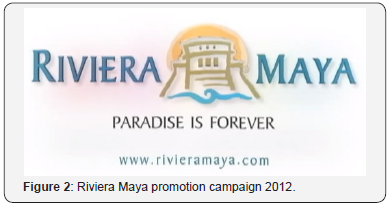
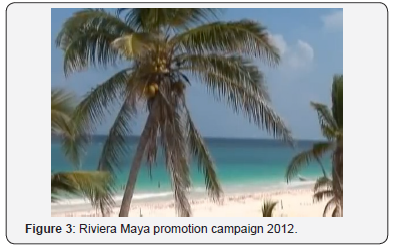

We wonder, therefore, how it has managed to be a successful
brand in such a short time or how it has managed to position
itself worldwide. In 2004, Kevin Roberts published the book
Lovemarks, which defined these brands as those to which we
are faithful beyond reason due to the emotional bond we create
with them. For such a brand to exist, Roberts claimed that three
ingredients should be given (Figure 4).
Mystery
There must be a story to tell, a past, but with the ability to
project into the future; there must be dreams, myths, symbols,
metaphors. An example of this is the Life and Death Festival in Xcaret, an event that in just four days receives more than 40
thousand people eager to live something that only Mexico has
been offering for centuries: the personal encounter with death to
remember those who have gone and live with them for one night.
Tourists of all nationalities flood the park, painting the faces of
skulls to witness stories, traditions and shows that revolve around
the grim reaper and its mystery (Figure 5).
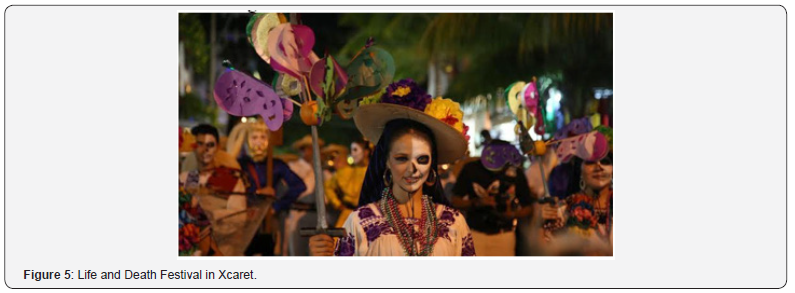
Privacy
In these brands, commitment, empathy and passion are
perceived. Returning to the case of La Riviera Maya, unlike any
traditional marketing product, it does not have a specific audience,
it has a heart capable of beating for everyone, regardless of race,
sex, nationality or preferences. The Riviera Maya breaks paradigms
of segmentation; it is a paradise with which anyone could feel
identified; all are welcome to meet from the cosmopolitan 5th
avenue in Playa del Carmen to the thematic hotels like the Hard
Rock or luxurious like the Grand Velas.
Sensuality
The brands must provoke sensations, connect with the
senses: they give us sounds, lights, smells, textures, flavors. This
is common in music, film or theatre festivals. The spectator
immerses himself in the spectacle and enjoys it with all the senses.
Some are already well known that give renown to the place where
they are held, such as Glastonbury in the UK, with more than 25
years or the FIB (International Festival of Benicàssim, Spain) with
23 editions (Figures 6 & 7).
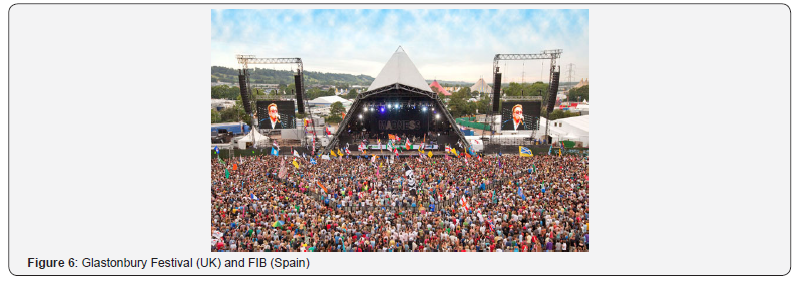
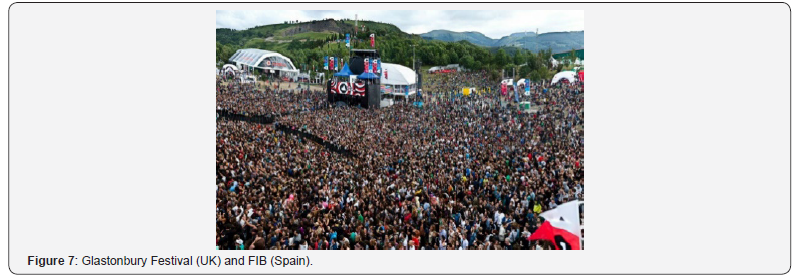
Despite the examples given, these approaches to the branding
of the tourist destination are recent in the world of tourism and
interpreted and defined based on previous work and / or the
result of professional research itself. The study of destination
branding as a discipline for marketing researchers appeared in the
late nineties, although the study of branding is more than 50 years
old. In the last decades the concept of Brand has been adapted
to different contexts. As Brand of countries, refer to the different
campaigns and slogans of Spain and its brand Spain, which is very
present in its promotional strategy. The tourist brand Spain is
the reflection of the perception that all the agents that are part of
its environment have on the country: real and potential tourists,
private sector, media, etc., so that its good positioning is crucial to
carry out the promotion of destiny successfully. That is why this
is one of the most important objectives of the Tourism Institute of
Spain: achieving an optimal positioning of the tourism brand in
Spain, collaborating with the rest of the public bodies in charge
of ensuring the rest of the dimensions of the brand. In 2002, the
first project of the Spain brand was launched with the Joan Miró
sun as logo and clear objective, to enhance the image of Spain
in a coordinated way. This is demonstrated by the advertising
campaigns of Tours pain that have taken place over these years.
In addition to the legendary ‘Spain is different’ of the 80s, which
despite the time elapsed is still linked to this country brand,
since 2002 other slogans such as ‘España Marca’ (‘Spain Marks’)
resonate in 2003; ¡Sonríe, estás en España! (‘Smile, you are in
Spain! linking it to different types of tourism, Figures 8 & 9), in
2005; or ‘I need Spain ‘, in 2010.

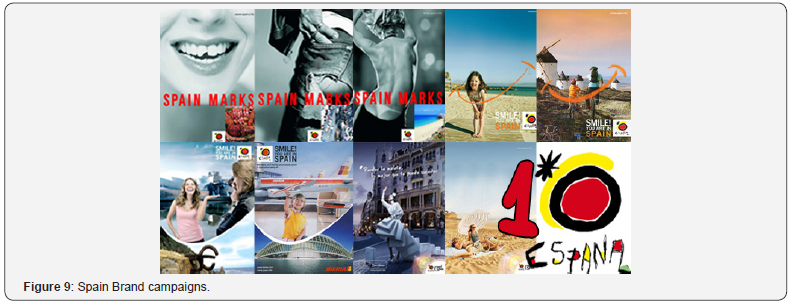
A brief analysis of the evolution of this concept shows that
destination branding has evolved accompanied by other related
concepts. Mainly from the term place promotion, which groups a
set of techniques for the promotion of the territory abroad. This
concept has given rise to the notion of place marketing, which
brings together the strategies of development and planning
of the territory. Subsequently, the concept of place branding
arises, which groups the values and attributes of the territories,
accompanied by promotion and communication strategies,
adopting a management philosophy. With this concept very close
to tourism, destination branding emerged focused on the area
of tourism and tourist travel. From this form, it should be noted
that the brand of the tourist destination is not the same brand
as the brand of the products, the country or a brand. Destination
branding has three essential components (Figure 10).

a. Identity of the destination: it is defined as the way in
which the tourist is intended to perceive the destination
b. Personality of destiny: the way in which destiny differs
from other tourist destinations.
c. Image of the destination: it appears as a fundamental
component in branding, which stimulates the appearance of
a set of impressions, ideas and feelings that the tourist has
about the destination.
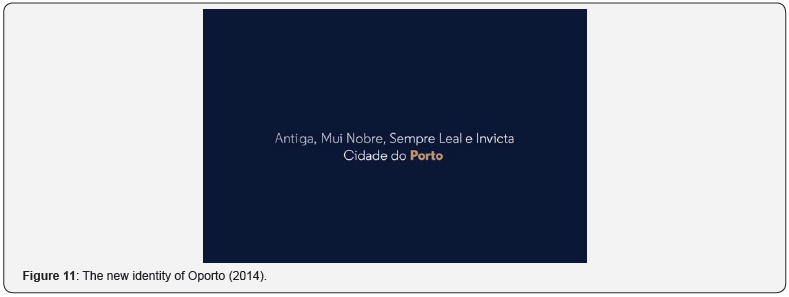

In the first component, identity, we speak of perceptions, these
being an important ferment for two successive tourist destinations,
a time that competitiveness between the destinations depends on
how this tourist hair is perceived, mainly at the level of quality,
prestige e brand image. The large number of tourist destinations
and the ever-higher offer leads to increased competitiveness and
the need for differentiation of destinations, which reinforces the
need for branding. Up to this point there has been talk of branding
and destination branding, but closely linked to this concept is
that of branding image and destination image. Understanding the image of a place allows you to recognize the place or country as
a brand and consider its positive and negative aspects, that is, its
strengths and weaknesses. Thus, it is essential to correctly know
the Brand image of the destination so that it can be a community
with clarity. An example of this was the strategy chosen by Oporto
in the 2014 campaign, opting for a radical change of image. This
new identity wanted to give the city a strong personality, using
a clear message in the form of a simple and endless network of
symbols. Oporto has a great personality that, thanks to this system
or open language, can be developed in an almost unlimited way
with the possibility of new communicative and touristic projects
(Figures 11-14).
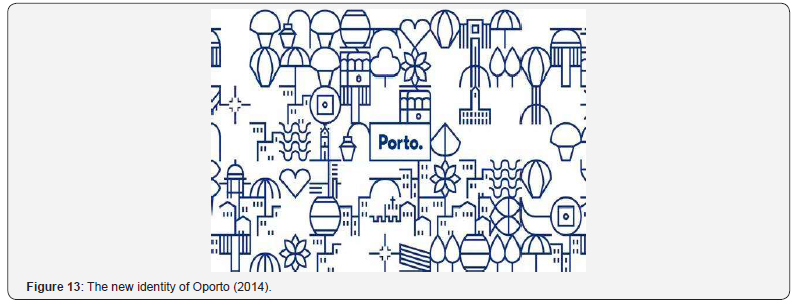

Image Components
Just as it is fundamentally to understand their formation, it is
crucial to understand the components of the image. The image of
the tourist destination is formed by three different components
[9], but hierarchically related (Figure 15). The cognitive
component, also called “perceptual” or “intellectual”, is the
result of the image and attributes of the tourist destination that
has the capacity to attract tourists (Figure 16). It is a dimension
of interpretation of the characteristics of the destination that
includes the information that contributes to the knowledge about
the destination, or in summary, it is what the individual thinks or
thinks he knows about the destination.
The affective component is the result of the reason for the
tourist’s choice of a certain tourist destination, based on the result
of his affective evaluation of it. It encompasses emotions and
feelings related to the destination and is crucial in the development
of the tourist with the destination and in the creation of loyalty.
Concerning the conative, behavioral or behavioral intention
component, this includes the way of choosing the destination
based on the cognitive and affective elements that the tourist has
about the destination. Based on a subjective perception of the
destination, it is defined as the “action component”. It expresses
the behavioral side and presents a direct relationship with the
cognitive and affective components, since it depends on the image
developed during the cognitive stage and the evaluation made in
the affective stage.
Conclusion
The image of a tourist destination is part of its identity,
transmitting beyond its residents an idea of it. The tourists who
do not know a place, are previously formed images of the same,
based on perceptions and previous information received. This
preconceived image will be the one that influences the decision
to visit the destination, so transmitting a real and attractive
image is key as an attractive element of the destination. Once
the destination is visited, to this idea the real experiences and
experiences are added, forming in the mind of the tourist a
new image of the destination. This new conception will directly
influence the visit of this tourist, and indirectly in new tourists,
since the image formed will be transmitted to other individuals.
The process of formation of the tourist image is complex, since
several components (cognitive, affective and conative) are united.
It is often unpredictable, but its study is important as an element
of transmission of the identity of a destination and as an influential
variable in the behavior of the tourist or traveler.
To know more about Journal of Archaeology and Anthropology: https://juniperpublishers.com/gjaa/index.php




Comments
Post a Comment